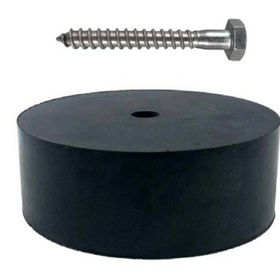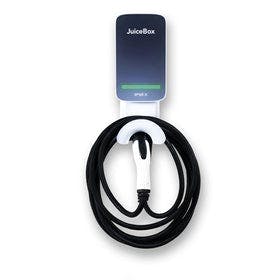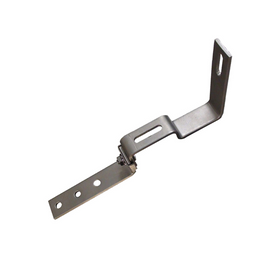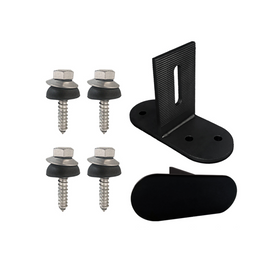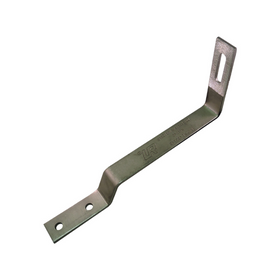
Batteries and Inverters: A Simplified Guide For Home Solar Systems
Last Updated: Feb 9, 2025Unless you are an electrician or a technology geek who loves a riveting conversation about circuits, joules, amps, and other electrical jargon, most sustainability-minded homeowners want a few solar panels to reduce their monthly electricity bills, possibly even replace their need for municipal energy altogether. Understanding the specifics of how solar panels allow photons, or light particles, to free electrons from atoms and thus generate a flow of electricity that your home can utilize is most likely beyond the interest of the majority of people.
But, even if you're not knowledgeable about the specifics of how solar energy works, learning a bit about batteries and inverters will help you make a more informed decision about the best system for your particular needs. While many renewable energy companies will sell complete solar energy kits, you could potentially save money and increase the performance standards of your home PV system by choosing an inverter and battery system that is designed for your specific context and needs.
What is an Inverter, and Why Is It Needed?
When researching solar PV systems, discussions on AC and DC currents are common. Alternating current electricity, or AC, is the most common electricity used in homes and buildings. Direct current, or DC, is the type of electricity most commonly associated with RVs and houseboats. Whereas DC electricity only flows in one direction through electrical wire, AC electricity moves in a back and forth motion between double wires.
Solar panels usually are made up of two layers of silicon, which is a conductor material. When these cells receive sunlight, the photons from the sun interact with the electrons in the top layer of silicon and essentially knock them loose. The separated electrons are attracted to the atoms in the lower layer of silicon and travel through a wire to get there. This movement of electrons from one side of the PV cell to the other (in one direction) generates DC electricity.
Almost every home, household appliance, and electrical utility company today use AC because it is relatively inexpensive to transform AC energy from one voltage to another through transformers. While you lose a bit of power in the transformation from DC to AC, unless you plan to completely rewire your home and change most household appliances you use, an inverter is a necessary component of a solar photovoltaic (PV) system.
Inverters represent a comparatively low part of the total PV system cost. Still, the best-suited inverter for your PV system will lead to more efficient solar energy output and thus better (and quicker) financial returns for homeowners who invest in them. Besides converting DC energy to AC, the best inverters on the market should also offer data monitoring services, preventative maintenance options, and a warranty.
While the most appropriate inverter for your specific needs will depend on your particular solar energy system, the three options reviewed below make for great inverters for any home PV system.
- Fronius Inverters: An Austrian-owned company, all of these inverters come with a 10-year warranty and have a wide-ranging power category—from 1.5 to 27.0 kilowatts (kW)—allowing flexibility for almost any size of the home PV system.
- Solar Edge Inverters: The single-phase inverter provided by Solar Edge is one of the smallest and lightest on the market. For household PV systems that average between 5 and 6 kW, this inverter boasts a 99% efficiency rating—meaning that you will be losing much less energy during conversion from DC to AC.
- SMA Inverters: These German-made solar power inverters are highly efficient at transforming DC from your solar panels into usable AC electricity for your home. Suppose you are looking for a more inexpensive option. In that case, the company also owns a majority share in the Chinese company ZeverSolar Inverters, specializing in making affordable but reliable inverters for people on a tight budget.
Off-Grid or Grid Tied Systems?
Once you have effectively converted the DC energy produced by your solar panels into AC energy to power your home, another important consideration is whether you want to go completely off-grid or set up a grid-tied solar power system.
Off-grid solar systems attempt to produce and store all of the energy the home will need around the clock. Hence, they need to rely on batteries to store excess energy to power the house during the night or when overcast days limit the electricity produced by the solar panels.
A grid-tied system, in comparison, essentially uses the primary electrical grid as its battery backup. When a PV system connected to the local utility company grid produces more power than what is used in the home, the extra electricity is sent back to the utility grid. This causes your meter to spin backward in a process known as net metering. When your solar panels are not producing electricity or when you are using more power than what is being produced by your panels—like during the night, the inverter in your system will begin to pull power from the grid without the homeowner ever noticing a difference in where the energy comes from.
While off-grid systems certainly allow for more autonomy and might be suitable for rural homesteads where it would be prohibitively expensive to connect to the utility grid, they are generally more costly to install because of the need to include battery packs to store the energy produced. While hybrid home renewable energy systems that combine solar and wind technologies can make renewable energy around the clock, battery storage is still needed if you want to avoid being left without power on those dark, windless nights.
The Importance of a Battery Pack for Residential PV Systems
Whether you choose to go completely off-grid or stay connected to your local utility company, installing a battery pack for residential PV systems might be a good idea in the event of a power outage. As mentioned above, batteries are necessary for off-grid systems that want energy at night and can also help to lower your reliance on energy from the grid for grid-tied systems.
When searching for the best batteries for your home PV system, you need to consider the battery capacity, as measured in kilowatt-hours (kWh). You can use a simple home energy usage calculator to get a rough idea of how much energy your home uses during the night. If, for example, you use around 10 kWh hours of energy per day (the average household uses about 30 kWh per day, according to the U.S. Energy Information Administration), you would need a battery system with at least that amount of storage if you wanted to eliminate reliance on energy your home pulls from the grid.
It would help if you investigated the depth of the discharge rating for the batteries you are considering purchasing. This refers to the amount of the battery's capacity that can be safely and effectively used before compromising its performance. For example, if a 10 kWh has a depth of discharge of 85%, you could use 8.5 kWh of the energy in the battery before needing to recharge it.
Because batteries are a significant investment that will increase the overall price of a home solar power system, you should also always look for batteries that come with at least 10-year warranties.
Perhaps the best-known battery system for home PV systems is the Tesla Powerwall. The Powerwall integrates with household PV systems to store excess energy generated during the day and makes it available when you need it. This can limit dependency on your utility during the night and thus further lower your bills for grid-connected systems. Each Powerwall battery can store up to 13.5 kWh of electricity and costs around $5,900.
Bottom Line
Finding a suitable inverter and battery for your particular residential solar panel system will help you to optimize the performance standards of the energy you produce while also reducing the payback time of your initial investment. These are essential pieces to consider when investing in solar power!
Table of Contents
Tobias Roberts
Tobias runs an agroecology farm and a natural building collective in the mountains of El Salvador. He specializes in earthen construction methods and uses permaculture design methods to integrate structures into the sustainability of the landscape.




